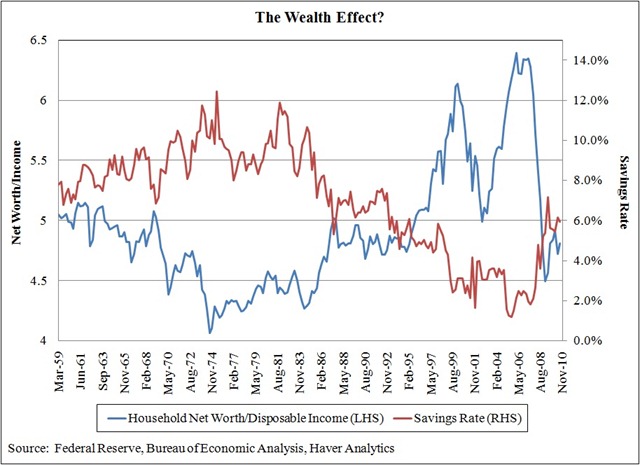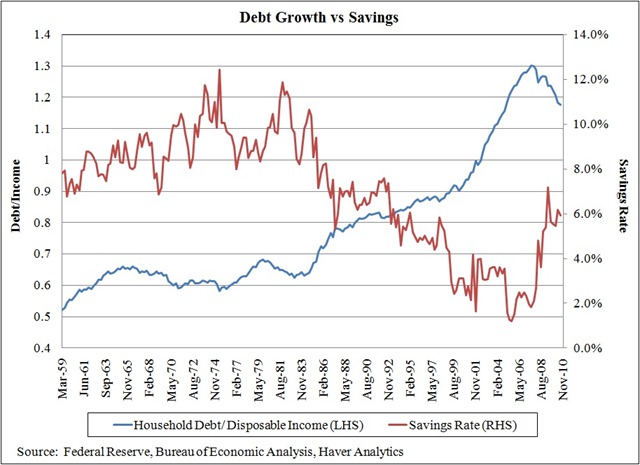2 hours ago by Annaly Capital
An interesting recent piece by Reuven Glick and Kevin J. Lansing of the San Francisco Fed looks to explain changes in the savings rate over time. On an aggregate level, the authors point out that the savings rate is mostly a function of:
1. Wealth – if I'm already wealthy, I don't need to save as much
2. Credit availability – if I can borrow to spend, I don't need to save as much
First, they compare wealth, measured by household net worth as a percentage of disposable income, and the personal savings rate.

You can see very clearly the two asset booms on the right side of the graph, first equities and then housing. Both of these were clearly bubbles in retrospect, and therefore not repeatable. This also tells us that the corresponding savings rate in the 2%-4% range isn't sustainable.
Second, they look at credit availability as measured by household debt to disposable income.

What's the right level of debt? As we've said before, we don't know, but it appears that 130% in 2007 was too high. This also tells us, again, that the corresponding 2-4% savings rate was likely too low. In the short run, a rising savings rate reduces GDP because personal consumption is still 70% of GDP. The rise in the household savings rate from below 2% in 2007 to above 6% recently coincided with a painful reduction in consumer spending and economic activity. Much of the stimulus, including 0% interest rates from the Fed and a slew of spending incentives from the fiscal authorities (Cash for Clunkers and the homebuyer tax credits), was aimed at stimulating spending at the expense of savings, to break the paradox of thrift endangering the economy.
The real paradox of the savings rate is touched on by John Hussman in his most recent weekly commentary, entitled "Illusory Prosperity – Ludwig Von Mises on Monetary Policy." Hussman discusses the relationship between savings and investment: "The amount of real physical investment in the economy is, and must be, precisely equal to the amount of output not allocated to consumption but instead to savings."
The conundrum of central bankers: savings is needed to fund investment. Lower savings may boost current economic growth, but at the expense of longer term economic well being.
Post Footer automatically generated by Add Post Footer Plugin for wordpress.
Sent from my iPad
No comments:
Post a Comment